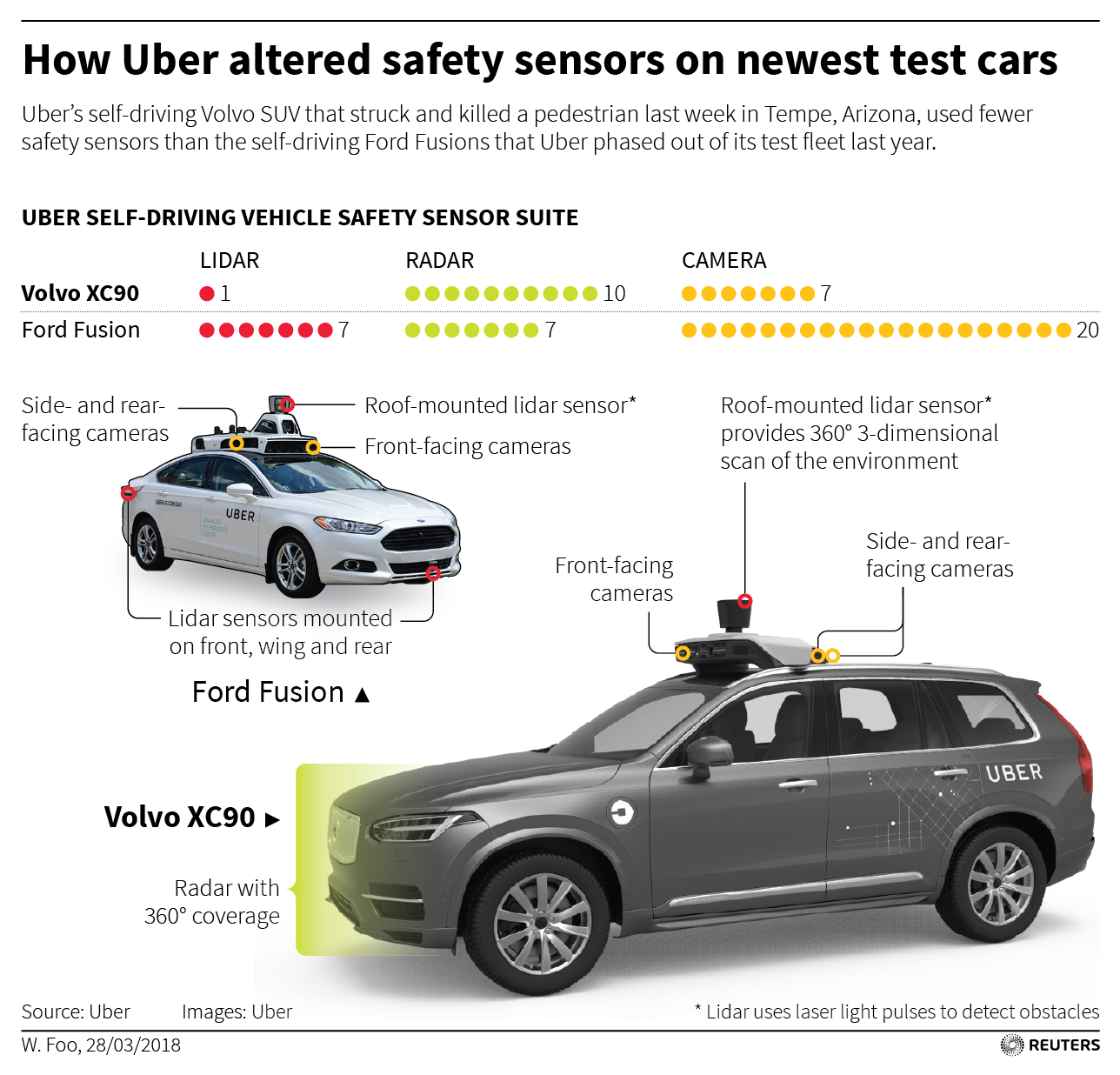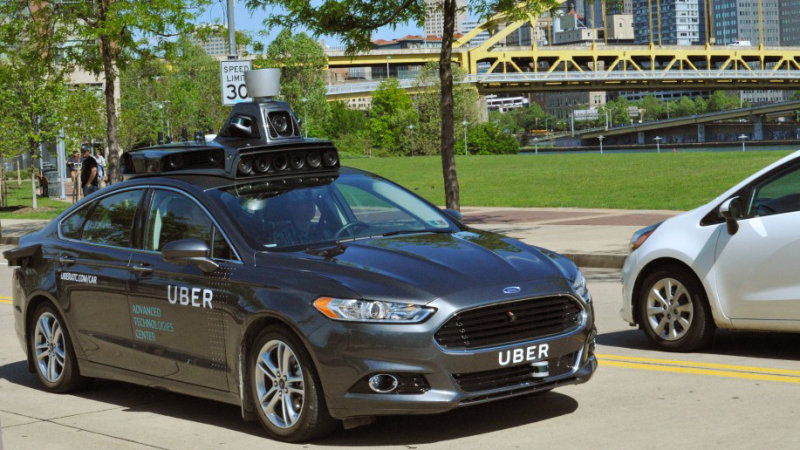The recent fatal accident in Arizona has brought Uber’s self-driving technology into question. Especially now that it has been made known that the company reduced the number of lidar sensors on each car from seven to a single array.
Uber’s change happened all the way back in 2016, when it traded its fleet of Ford Focus for newer Volvo SUVs. The original Fords were equipped with sensors all around, preventing blind spots from happening and allowing the equipment to collect a substantial amount of information.
On the other hand, the Volvo’s only mounted a single lidar on the roof. According to experts, this would make it insufficient to detect objects that lay below the roofline of the vehicle – despite being good enough to create a 360-degree view of the surroundings of the car. In other words, it would have trouble seeing things that were close to the ground.

Lidar functions by projecting light pulses out and then recorded the reflections. This allows the system to measure the distance of objects around it, and is much faster than the electromagnetic waves used in radar. All current self-driving cars use a combination of lidar, radar, and cameras to “see” in the real world.
The question is whether the accident could have been prevented with the use of more sensors.
Authorities are still investigating the matter and have not yet commented on the cause. However, it doesn’t look good for the ride-sharing company. Experts have noted that the location of the accident was well lit, and that there was nothing else around the location that could have interfered with the car’s sensors.
[Source: Reuters]
Follow us on Instagram, Facebook, Twitter or Telegram for more updates and breaking news.



